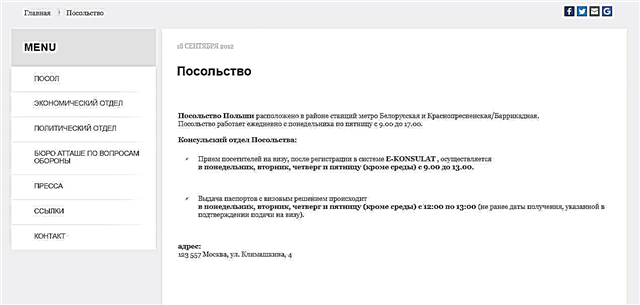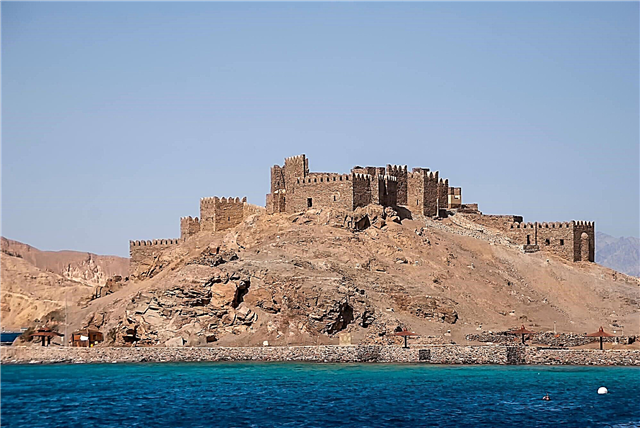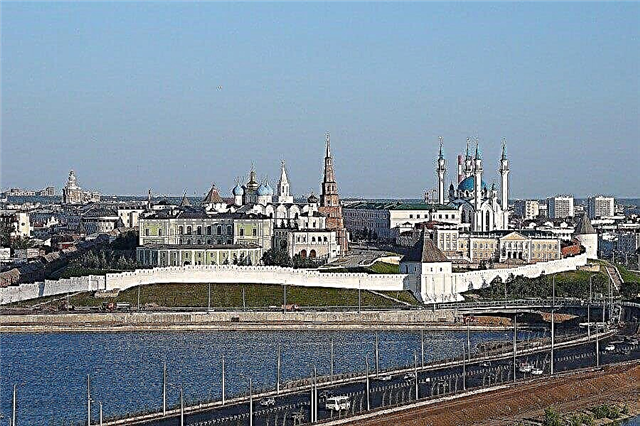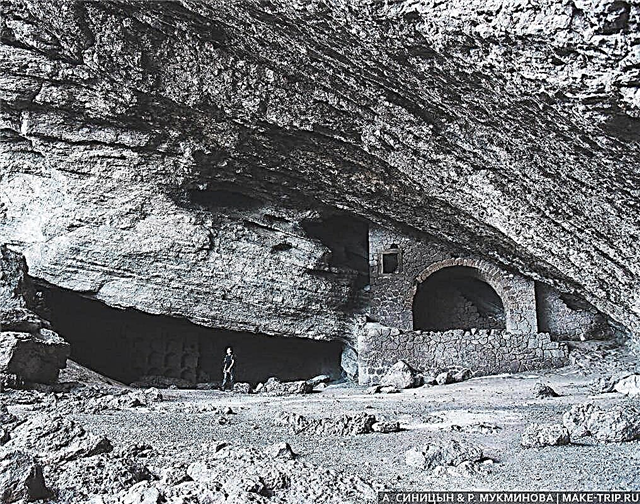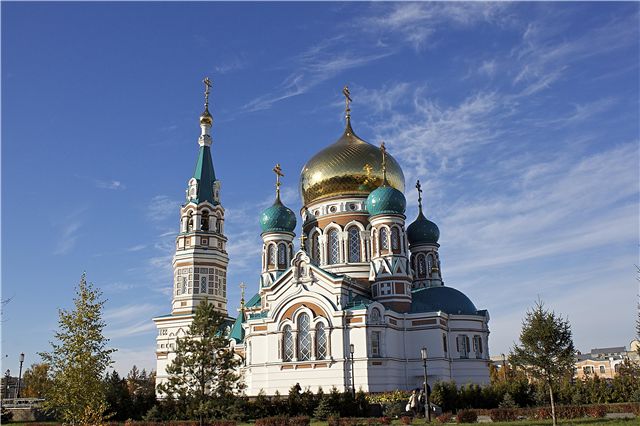In the largest cities of the Republic of Belarus, there is a tendency to an increase in the number of inhabitants. There are 6 cities in the country with a population of over a quarter of a million people. Most people live in the capital - Minsk. The tourism industry is developing throughout the state. Natural resources are actively used, for example, therapeutic mud: and now the modest 35-stitch Rogachev becomes a resting place for thousands of people who want to improve their health.
Other areas of tourism are the history and traditional culture of the region. All cities have monuments and objects associated with the events of World War II. And in Novopolotsk and other parts of Belarus, Crafts Centers are opening, where you can not only look at permanent exhibitions, but also attend master classes.
The largest cities in Belarus
List of the largest cities in terms of population in the country.
Minsk
The capital of Belarus is located near the geographic center of the country. During World War II, the city was badly damaged, so it was rebuilt and not many historical sites have been preserved. Main attractions: Cathedral of the Holy Apostles Peter and Paul, Opera and Ballet Theater, water-green diameter - a system of reservoirs, parks and boulevards that crosses the whole of Minsk, the Red Church.
Population - 1 992 685 people (2019).

Gomel
Located near the borders with Ukraine and Russia. The palace and park ensemble of Gomel was founded in the 18th century under Count Rumyantsev. Several memorial sites and places are associated with the Paskevich family, including their chapel-burial vault. The winter garden was created from an old greenhouse and has long been recognized as an architectural monument. And in the park of Turovsky you can find a pillar with signs in the direction of all the sister cities of Gomel.
Population - 535 693 people (2018).

Mogilev
A city in the east of Belarus, stretching on the banks of the Dnieper. The river divides Mogilev into two parts. St. Nicholas Convent is the main architectural monument of the area. Other iconic religious objects have also survived: the Borisoglebskaya Church, the Church of St. Stanislav, the Three Saints Cathedral. The local museum of local lore is one of the oldest museums in the country.
Population - 383 313 people (2019).

Vitebsk
The second most ancient city in Belarus stands on the Dvina River. Sightseeing: summer amphitheater, St. Barbara's church, Marc Chagall art center, town hall, Zdravnevo estate museum. The Vitebsk Zoo is divided into two parts: the smaller one is located in the center, and the larger one - 87 hectares - in the southeast of the city. Since 1992, the international festival of arts "Slavianski Bazaar" has been held in Vitebsk.
Population - 378 459 people (2019).

Grodno
Located 15 kilometers from the border with Poland and 30 kilometers from Lithuania. The historical layout of the city streets has been preserved. The main historical monuments are the Old and New Castles. Inside the Cathedral Basilica of St. Francis Xavier, you can admire frescoes and wooden altars from the 18th century. In the vicinity of Grodno, boat trips along the Augustow Canal are popular.
Population - 373,547 people (2019).

Brest
The city is known primarily for being one of the first to take the blow in the Great Patriotic War. The memorial complex "Brest Fortress" is an important historical and tourist site of Belarus. In 2009, a monument to the 1000th anniversary of Brest was unveiled. There are several museums, including the Museum of Rescued Valuables. Excursion tours to Belovezhskaya Pushcha start from here.
Population - 350 616 people (2019).

Bobruisk
The city greets guests with a monument to a beaver in a suit holding a raised hat. You can learn more about the history of Bobruisk in the ethnographic museum. Modern sports and entertainment facilities of the city: the water sports complex "Lesnoy", the ice palace, the equestrian sports club "Lomov". The ruins of the Bobruisk fortress, which played a role in the war of 1812, have survived.
Population - 217,546 people (2018).

Baranovichi
Occupies the interfluve of Shchara and Myshanka. One of the most interesting museums in the city is dedicated to railway technology. Here are collected locomotives, steam locomotives and trains from old to modern. Iconic temples of Baranovichi: Intercession Cathedral, Church of the Holy Wives of Myrrhbearers, wooden Church of the Exaltation of the Cross. Increasingly, sightseeing tours include visits to the memorial complex "Gai Tract".
Population - 179,000 people (2019).

Borisov
Distance to Minsk - 77 kilometers. In the Borisov United Museum, archaeological and ethnographic collections deserve special attention. The monument to the Battery of 1812 will remind you of the Napoleonic Wars. The oldest church in the city is the Church of the Nativity of the Virgin Mary. Near the Resurrection Cathedral, erected in the pseudo-Russian style, there is a monument to its founder, Prince Boris.
Population - 143,051 people (2018).

Pinsk
The industrial and cultural center of Polesie stands at the confluence of Pripyat and Pina. The city park and the embankment are the best places for walking. The former Jesuit collegium has been converted into a museum with exhibitions dedicated to the history of the area and folk crafts. The interiors of the churches of St. Charles Borromeo and the Assumption of the Virgin Mary attract not only Catholic parishioners, but also tourists.
Population - 137 961 people (2018).

Orsha
It stands at the confluence of the Orshitsa and the Dnieper. On the coast, archaeologists have discovered a burial mound dating from the 11th-12th centuries. The Museum of Wooden Sculpture, the Melnitsa Ethnographic Museum and the Gromyko Art Gallery offer interesting exhibitions all year round. Also, tourists should pay attention to the water mill with its arched bridge and the Orsha castle.
Population - 115,052 people (2018).

Mozyr
The city has an unusual architectural and planning system, which is explained by the difficult terrain. The central street, Sovetskaya, runs along the coast of Pripyat, and other streets run perpendicularly along the slopes of yarov and ravines. Sightseeing: Mozyr Castle, Museum of Local Lore, Catholic Church of St. Michael, Memorial "Mound of Glory".
Population - 111 733 people (2018).

Soligorsk
The first stone of the future city was laid in 1958. Soligorsk is rich in amateur associations and hobby groups, like the club of young poets. Large sports facilities - an ice rink, 2 stadiums, 4 swimming pools. The first roadheader is one of the unusual monuments of the area: after having worked it out, it was raised from the mine and installed as a monument.
Population - 106 627 people (2018).
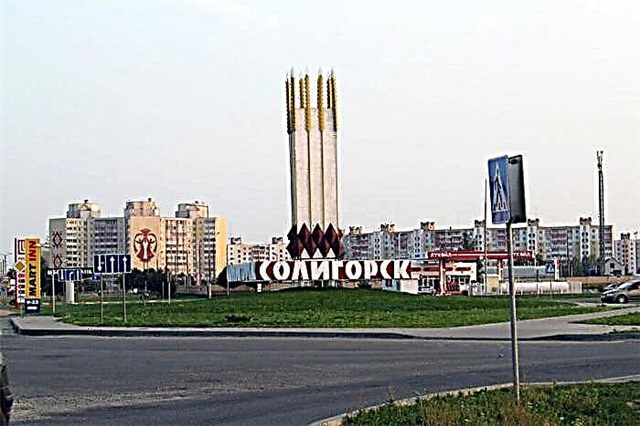
Lida
Large industrial center of western Belarus. The border with Lithuania is only 35 kilometers away. Near the main attraction of the city - Lida Castle - there is a recreation area with green spaces, a reservoir and fountains. In winter, a large ice rink is flooded here and the territory is decorated with garlands. Of the religious sites, the Church of the Exaltation of the Holy Cross, built in the Baroque style in 1770, stands out.
Population - 101 616 people (2018).

Novopolotsk
Center of Belarusian Petrochemistry. From here to Polotsk 6 kilometers. The memorial complex "First tent" tells how a workers' settlement was founded here, which received the status of a city in 1963. In the forested area, a monument was erected at the crash site of the Il-2 during the Great Patriotic War. The Center for Crafts and Traditional Culture has a permanent exhibition of creativity and master classes.
Population - 101,596 people (2018).

Molodechno
It is located 73 kilometers from Minsk. The city has many sports facilities, including an ice rink and a stadium that can accommodate nearly 5,000 spectators. Sightseeing: memorial complex "Stalag 342", Church of the Intercession of the Holy Mother of God, puppet theater "Batleyka". Periodically, Molodechno hosts festivals of alternative and folk music.
Population - 95,011 people (2018).
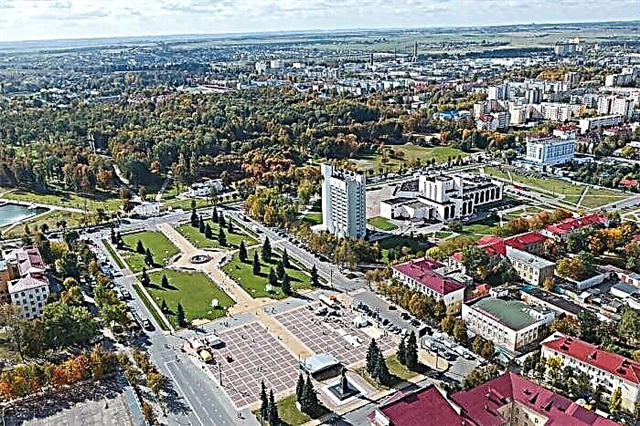
Polotsk
The most ancient city of Belarus, mentioned in the "Tale of Bygone Years".St. Sophia Cathedral is the oldest stone building in the country. It was erected in the 11th century, destroyed in the 18th century and restored at the same time. Red Bridge - the site of the battle with the French army in 1812 - is marked with a memorial plaque. In 2008 Polotsk was declared the geographical center of Europe.
Population - 84 597 people (2018).

Zhlobin
Gomel Polesie is spread over the plain. Zhlobin's architecture is typical for Soviet buildings. In the local history museum, separate rooms are devoted to the history of the Great Patriotic War and the life of Belarusian peasants. The Orthodox Cathedral of the Life-Giving Trinity was destroyed during the war and rebuilt only in 1995. And the Catholic chapel of St. Casimir was built at the expense of believers.
Population - 76,220 people (2018).

Svetlogorsk
The status of the city was obtained only in 1961, which makes Svetlogorsk one of the youngest in Belarus. In addition to the local history museum and art gallery, the city has a unique House of Crafts. The local exhibition hall hosts at least 15 temporary exhibitions annually. Other sights: Holy Cross Church, Alterheim House, old mill, Grieving Bell.
Population - 67 453 people (2018).

Rechitsa
Named after the river - a tributary of the Dnieper. On the right bank there is an archaeological site - an early Stone Age settlement. The Holy Dormition Cathedral was illuminated again in 2003. And the Holy Trinity Church was restored 4 years later. In the vicinity there are sanatoriums and recreation centers, including "Sunny Beach", "Berezina" and "Milograd".
Population - 65 940 people (2018).
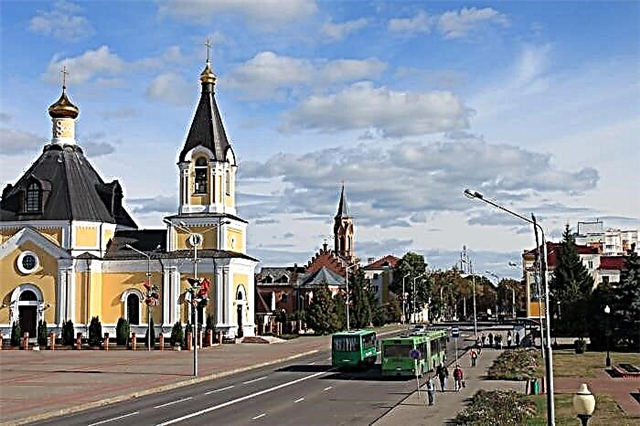
Zhodino
Located 44 kilometers from the capital on the Plisa River. The Orthodox chapel is the oldest building in Zhodino. However, tourists are much more attracted by "Bogoslav Pole" - an area built up with wooden houses with a mill and a well. An arboretum is open in the city center: a collection of plants from different parts of the world is collected here. At the stadium "Torpedo" matches are played by the club of the same name from the Higher League of Belarus.
Population - 64 559 people (2018).

Slutsk
It was first mentioned in chronicles in the XII century. Throughout its history, Slutsk has lost many attractions, including temples of different religions. Among the surviving churches, Mikhailovskaya, dating from the 18th century, stands out. The buildings of the theological school and the gymnasium also belong to the architectural monuments. An art gallery has been operating in the city since 2005.
Population - 61 818 people (2018).

Kobrin
The city of the western part of Polesie. For suppressing the uprising of Tadeusz Kosciuszko, Suvorov was granted the estate "Kobrin Key". Since 1946, it has housed a military history museum named after the commander. The park area at the estate is one of the most picturesque in Belarus. A modern water park has been opened on its territory. Other beauties of Kobrin: the Spassky Monastery, a monument in honor of the victory over Napoleon, the Assumption Church.
Population - 53 411 people (2019).

Slonim
One of the most ancient cities in the country. The main religious sites: Trinity and Transfiguration Cathedrals, the Catholic Church of St. Andrew, as well as the synagogue, the building of which was erected in the Baroque style. Tourists should take a stroll through the historical center with its buildings of the 19th and early 20th centuries. At a distance of 10 kilometers from Slonim there is a male Zhirovichi Orthodox monastery.
Population - 49 441 people (2018).

Volkovysk
A green city located on a hilly area on the banks of the Ross River. The Church of St. Wenceslas belongs to the Catholic Church and is an architectural monument of the nineteenth century. The Manor, better known as the "House of Bagration", houses a military history museum. In the southeast of Volkovysk there are the settlements "Muraveinik" and "Swedish Hill".
Population - 44,004 people (2018).

Kalinkovichi
It is not excluded that the city will soon merge with neighboring Mozyr: the distance between them is only 8 kilometers and due to the ongoing development it continues to decrease. There are many monuments in Kalinkovichi, including: a memorial alley of Heroes, an obelisk to Soviet pilots, a steam locomotive-monument. Since 1995, a folk humor festival has been held in nearby villages.
Population - 40,282 people (2018).

Smorgon
The coat of arms of the city depicts a bear, as there were many club-footed ones in the local forests, and until the 70s of the 19th century, a "school" for training them worked in Smorgon. An unusual amphitheater has been built in the city: from the main stage, two bridges are thrown across the stream, leading to the spectator's seats. The battlefields, the house of Bogushevich, the estate of Oginsky, the ruins of the Krevsky castle are available for inspection in the district.
Population - 37 528 people (2019).

Rogachev
It stands at the confluence of the Drut 'river into the Dnieper. There is a dairy cannery in Rogachev, whose products are actively exported. The two main religious sites in the area are the Church of St. Anthony of Padua and the Cathedral of Alexander Nevsky. For 60 years of its existence, the local museum of national glory has collected a collection of 27 thousand exhibits. Not far from the city is the Pridnestrovskiy sanatorium, famous for its curative mud.
Population - 34 809 people (2018).

Slides
The name Gorkam was given because of the five relatively large hills on which the city stands. The Church of the Ascension of the Lord appeared here in the middle of the 19th century. It is recognized as an architectural monument. Near the Lower Lake there is an amphitheater, a semicircular canopy was made above the stage, and a promenade was made along the shore from the spectator rows. 3 small museums have been opened, the most visited of them is the historical and ethnographic one.
Population - 33,008 people (2018).

Osipovichi
A major railway junction in Belarus. One of the symbols of the city is a steam locomotive monument erected in the second half of the last century. In 1949, the Church of the Exaltation of the Cross was transported to Osipovichi from the village of Zamoshie. It is dated 1826 and is considered a monument of wooden architecture. In the local museum of local lore, new thematic temporary exhibitions appear every year.
Population - 31,129 people (2018).



